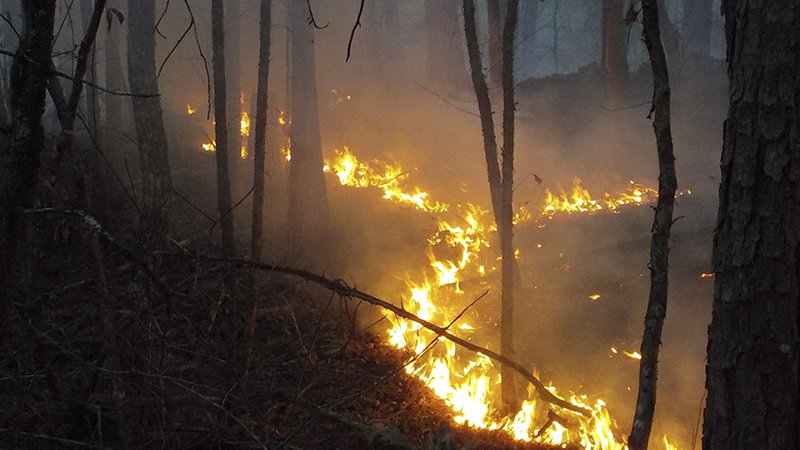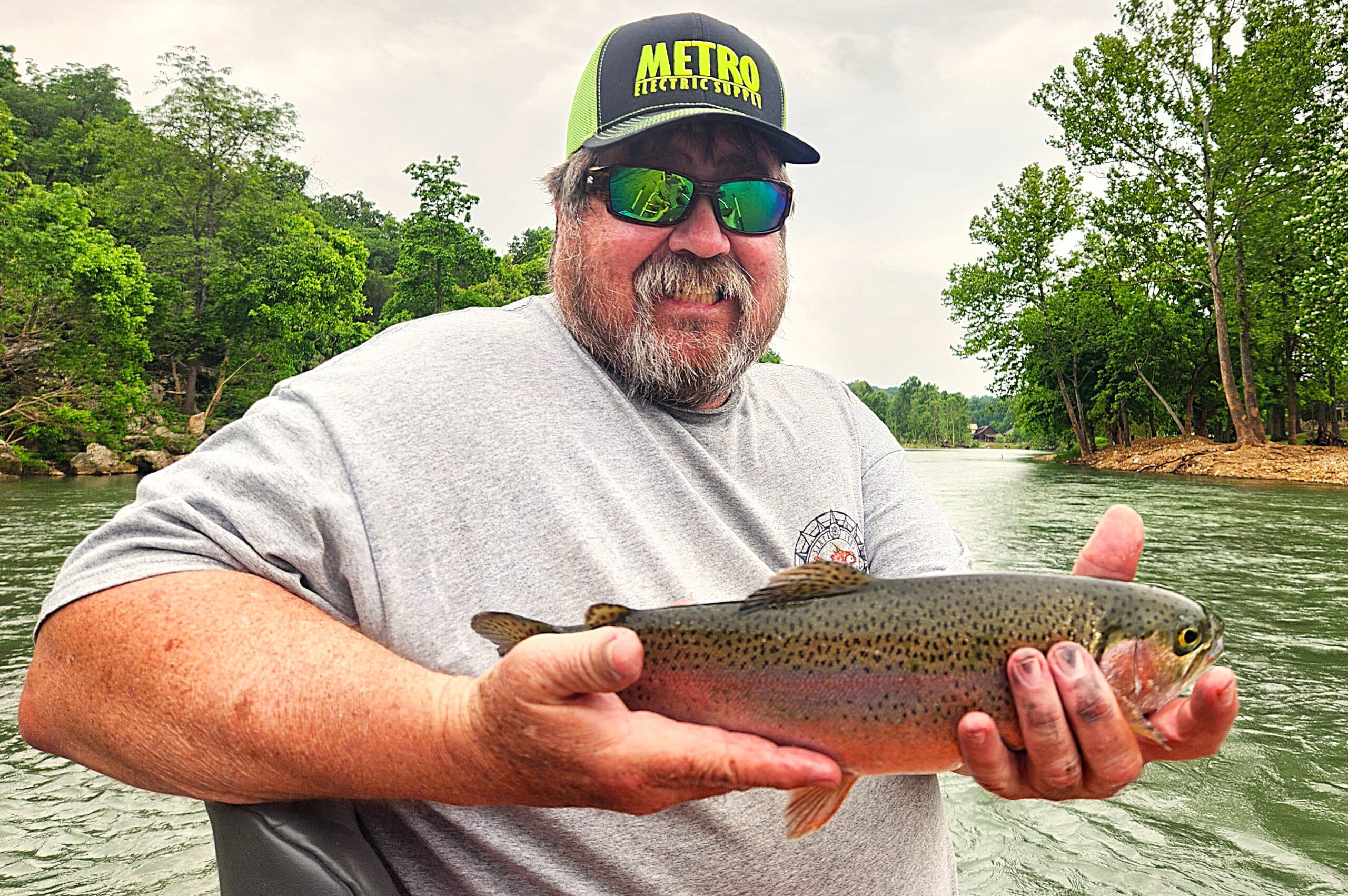Fires on Winona and Piney Creeks WMAs stern reminder of dry conditions
ON 11-29-2017

Nov. 29, 2017
Randy Zellers
Assistant Chief of Communications
Hunters, campers and other outdoors enthusiasts should pay particular attention to the dry conditions as they enjoy the outdoors, as it only takes a spark to start what could become an uncontrolled wildfire. The U.S. Forest Service currently is working to contain two wildfires, one on Winona WMA in the Ouachita National Forest, and the other on Piney Creeks WMA in the Ozark National Forest.
More than 940 acres of woodlands in Winona WMA have burned in a wildfire that began Nov. 21. While the fire has been relatively low intensity and is 80 percent contained, it has caused the Forest Service to close nearby Flatside Wilderness Area as well as a portion of the Ouachita Trail as a safety precaution.
Jake Whisenhunt, AGFC wildlife biologist, says the fire has not shown much evidence of getting to the crown of the trees so far.
“I didn’t observe any large timber damage and only the understory was impacted,” Whisenhunt said. “Hopefully this fire will produce results similar to a good controlled burn, but we’ve been lucky.”
Another fire north of Lees Chapel has impacted about 2,000 acres of the Ozark National Forest in Piney Creeks WMA since its start on Nov. 25. That fire is considered 90 percent contained after fire crews secured a fireline and removed burnable vegetation between the fireline and oncoming fire. Pilot Rock Road and three forest service roads in the area have been closed because of this fire.
The exact causes of both fires are still under investigation, but the Forked Mountain fire was likely caused by human activity. The current status of both fires and closures associated with them can be found at http://inciweb.nwcg.gov/.
AGFC Wildlife Officer Robbie Stout says these sorts of fires are good reminders of just how quickly a cigarette butt, campfire or fire from machinery can turn into a large-scale burn with deadly potential.
“It’s extremely important to keep track of burn bans and adhere to them,” Stout said. “Not only for campfires and burning leaves on your property, but also for any sorts of activities that can cause sparks and flame.”
Most people know to always completely extinguish a campfire before leaving it, and to have fire-extinguishing tools nearby when burning debris in their yard, but when burn bans are in place, even the sparks from a trailer’s safety chains dragging on the road or a bush hog blade hitting rocks can spark up an unplanned blaze. For more information about how you can help prevent wildfires, and how they differ from beneficial prescribed fires, visit the U.S. Forest Service’s website, www.smokeybear.com.
Recent News
Subscribe to Our Weekly Newsletter E-mails
Don’t miss another issue. Sign up now to receive the AGFC Wildlife Weekly Newsletter in your mailbox every Wednesday afternoon (Waterfowl Reports are published weekly during waterfowl season and periodically outside the season). Fishing Reports arrive on Thursdays. Fill in the following fields and hit submit. Thanks, and welcome!


